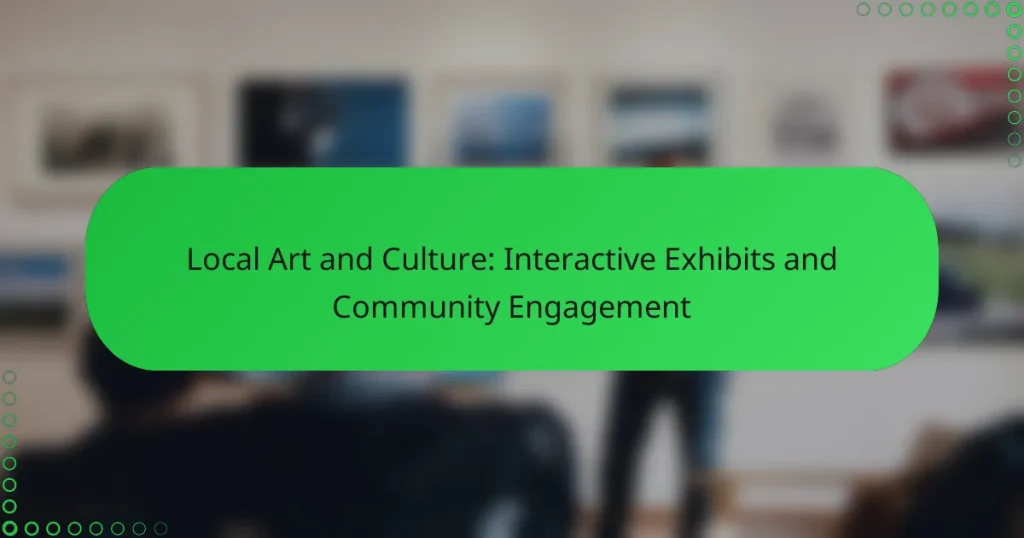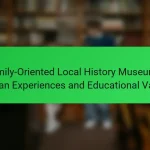Interactive exhibits play a crucial role in enhancing local art and culture by promoting engagement and participation among community members. By creating immersive experiences, these exhibits allow visitors to connect with art in meaningful ways, fostering a deeper appreciation for the local culture. Additionally, effective community engagement strategies encourage residents to take an active role in cultural activities, strengthening their connection to the artistic landscape of their community.
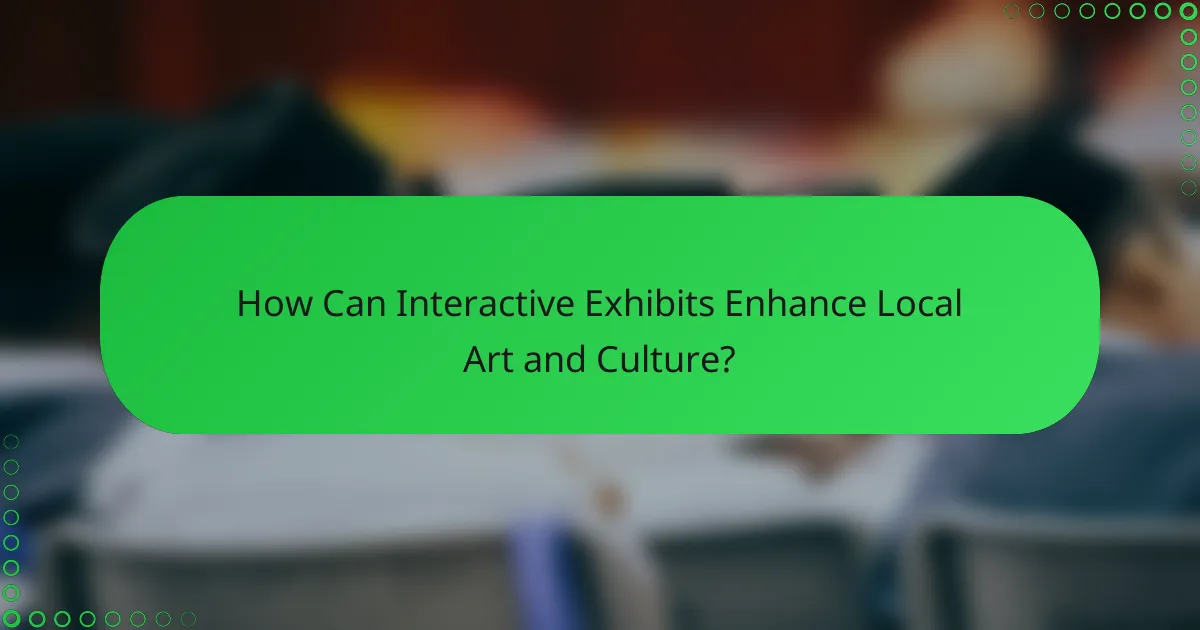
How Can Interactive Exhibits Enhance Local Art and Culture?
Interactive exhibits can significantly enhance local art and culture by fostering engagement and participation among community members. These exhibits create immersive experiences that allow visitors to connect with art in meaningful ways, encouraging a deeper appreciation for local culture.
Engagement through technology
Technology plays a crucial role in making art more accessible and engaging. Interactive displays, augmented reality, and virtual reality can transform traditional exhibits into dynamic experiences that captivate audiences. For instance, visitors might use their smartphones to unlock additional content or participate in interactive storytelling that brings local history to life.
Utilizing social media platforms can further amplify engagement, allowing visitors to share their experiences and connect with others. This digital interaction can foster a sense of community and encourage repeat visits to local art venues.
Community participation opportunities
Interactive exhibits often include opportunities for community involvement, such as workshops, artist talks, and collaborative projects. These activities invite locals to contribute their ideas and creativity, making them feel a part of the artistic process. For example, a community mural project can engage residents in expressing their cultural identity while beautifying public spaces.
Moreover, involving community members in the planning and execution of exhibits can lead to a more diverse representation of local culture. This inclusivity ensures that the exhibits resonate with a broader audience and reflect the unique characteristics of the community.
Showcasing local artists
Interactive exhibits provide a platform for local artists to showcase their work and connect with the community. By featuring artists from the area, these exhibits can highlight diverse perspectives and creative expressions that might otherwise go unnoticed. This not only supports local talent but also enriches the cultural landscape.
Curating exhibits that focus on specific themes relevant to the community can further enhance this connection. For instance, an exhibit centered on local folklore or historical events can draw attention to artists who interpret these themes in innovative ways.
Educational programs for schools
Interactive exhibits can serve as valuable educational resources for local schools, offering programs that align with curriculum standards. By incorporating hands-on activities and guided tours, students can engage with art in a way that enhances their learning experience. For example, a science-art collaboration might explore environmental themes through interactive installations.
Schools can partner with local art institutions to create field trips that are both educational and enjoyable. These programs not only foster an appreciation for art but also encourage critical thinking and creativity among students, preparing them to become informed members of the community.
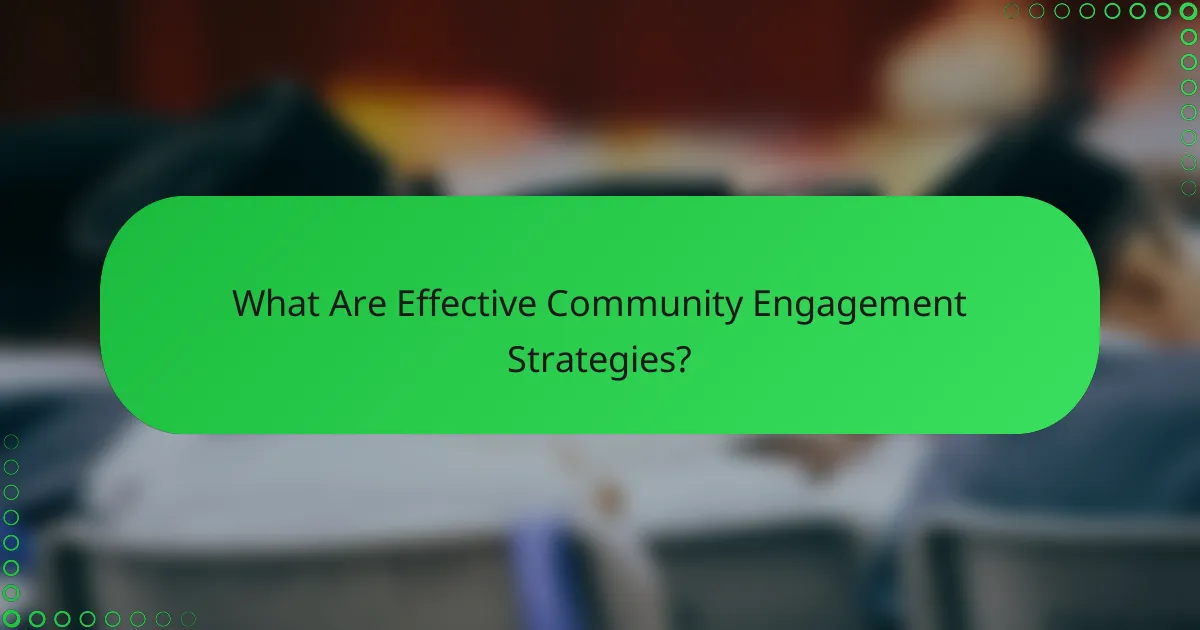
What Are Effective Community Engagement Strategies?
Effective community engagement strategies involve actively involving local residents in cultural activities and decision-making processes. These strategies foster a sense of ownership and connection to the art and culture within the community.
Workshops and hands-on activities
Workshops and hands-on activities provide participants with the opportunity to learn new skills while engaging with local art forms. These can range from pottery classes to painting sessions, allowing community members to express their creativity and connect with others.
To maximize participation, consider offering workshops at various times and locations, ensuring accessibility for all community members. Collaborating with local artists as instructors can enhance the experience and promote local talent.
Collaborative art projects
Collaborative art projects encourage community members to work together towards a common goal, fostering teamwork and creativity. These projects can include mural painting, community gardens, or public art installations that reflect the community’s identity.
When planning collaborative projects, ensure that they are inclusive and invite input from diverse groups within the community. This not only enriches the project but also strengthens community bonds.
Local artist showcases
Local artist showcases provide a platform for artists to display their work and connect with the community. These events can take the form of exhibitions, open studios, or art fairs, highlighting the unique talents within the area.
To effectively promote these showcases, utilize social media and local networks to reach a wider audience. Consider partnering with local businesses to host events, creating a vibrant atmosphere that draws in community members and supports local artists.
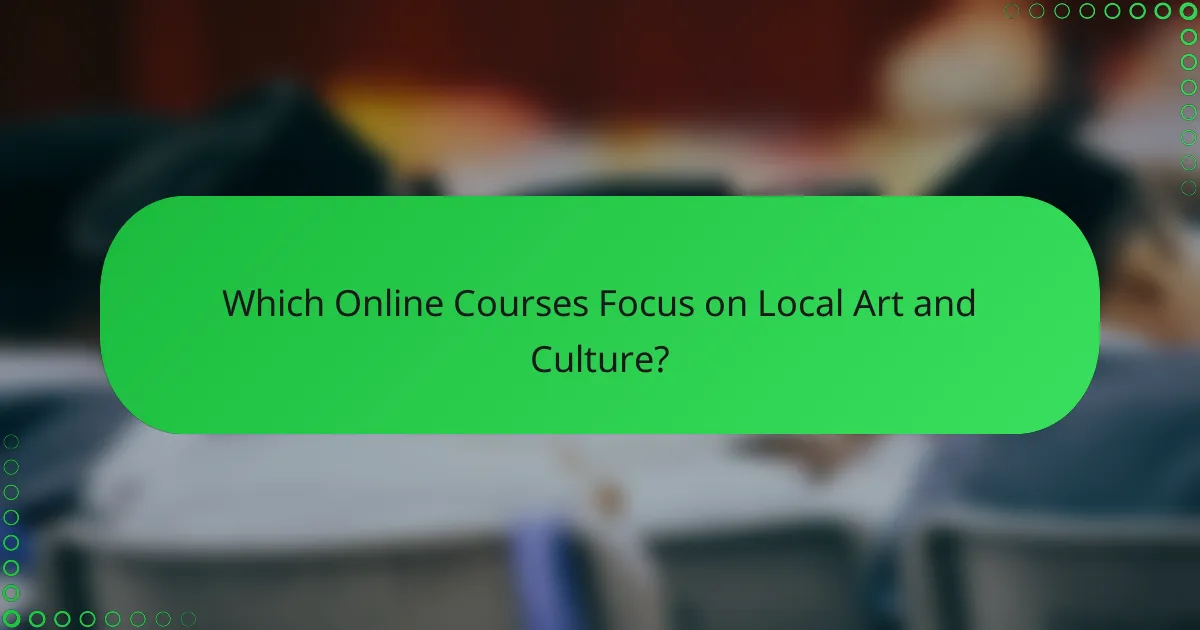
Which Online Courses Focus on Local Art and Culture?
Several online courses emphasize local art and culture, providing valuable insights into community engagement and interactive exhibits. These courses cater to various interests, from art history to design, and are offered by reputable platforms.
Art and Community Engagement by Coursera
This course explores the relationship between art and community, focusing on how local artists can engage with their surroundings. Participants learn strategies to foster collaboration between artists and community members, enhancing cultural appreciation.
Key topics include community-based art projects, funding opportunities, and methods for measuring engagement. The course encourages hands-on projects, allowing students to apply concepts in real-world settings.
Interactive Exhibit Design by edX
This course teaches the principles of designing interactive exhibits that engage visitors in meaningful ways. It covers essential design elements, user experience, and the integration of technology to enhance visitor interaction.
Students will work on projects that may involve local art institutions or community centers, providing practical experience. The course emphasizes understanding audience needs and creating immersive experiences that reflect local culture.
Local Art History by Skillshare
Focusing on the history of local art movements, this course offers insights into significant artists and cultural shifts within specific regions. It provides a comprehensive overview of how local art has evolved and its impact on community identity.
Participants will engage with various media, including video lectures and interactive discussions, to deepen their understanding. The course encourages exploration of local galleries and art events to connect theory with practice.
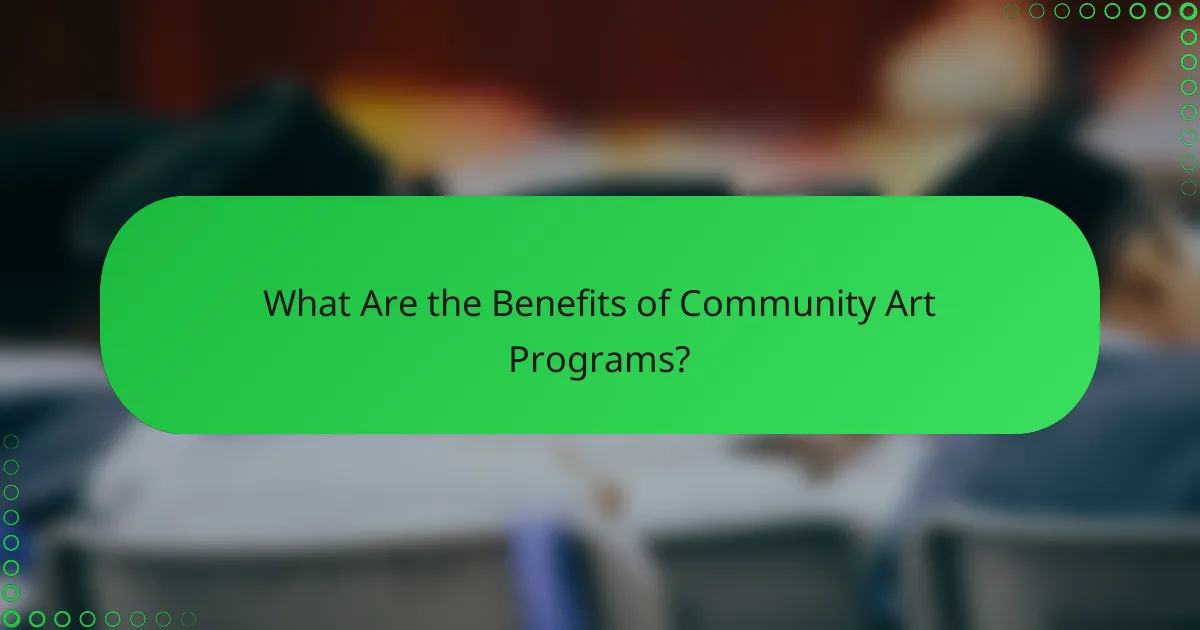
What Are the Benefits of Community Art Programs?
Community art programs offer numerous benefits, including enhanced social cohesion, economic stimulation, and the promotion of cultural diversity. These initiatives engage local residents, foster creativity, and create a sense of belonging.
Fostering social connections
Community art programs serve as a platform for individuals to connect and collaborate, breaking down social barriers. By participating in workshops, exhibitions, and collaborative projects, residents build relationships and strengthen their community ties.
For example, local mural projects often involve artists and community members working side by side, leading to shared experiences and friendships. These interactions can help reduce feelings of isolation and promote a supportive environment.
Boosting local economy
Art programs can significantly contribute to the local economy by attracting visitors and creating job opportunities. Events like art fairs and exhibitions draw crowds, which benefits local businesses such as cafes, shops, and hotels.
Moreover, community art initiatives often require local artisans and vendors, providing them with income and exposure. Investing in art programs can yield economic returns, often resulting in a boost of several percentage points in local revenue during events.
Encouraging cultural diversity
Community art programs promote cultural diversity by showcasing a variety of artistic expressions from different backgrounds. This inclusivity enriches the local culture and encourages dialogue among diverse groups.
For instance, multicultural festivals featuring art, music, and food from various cultures can help residents appreciate and celebrate differences. Such events foster understanding and respect, creating a more harmonious community.
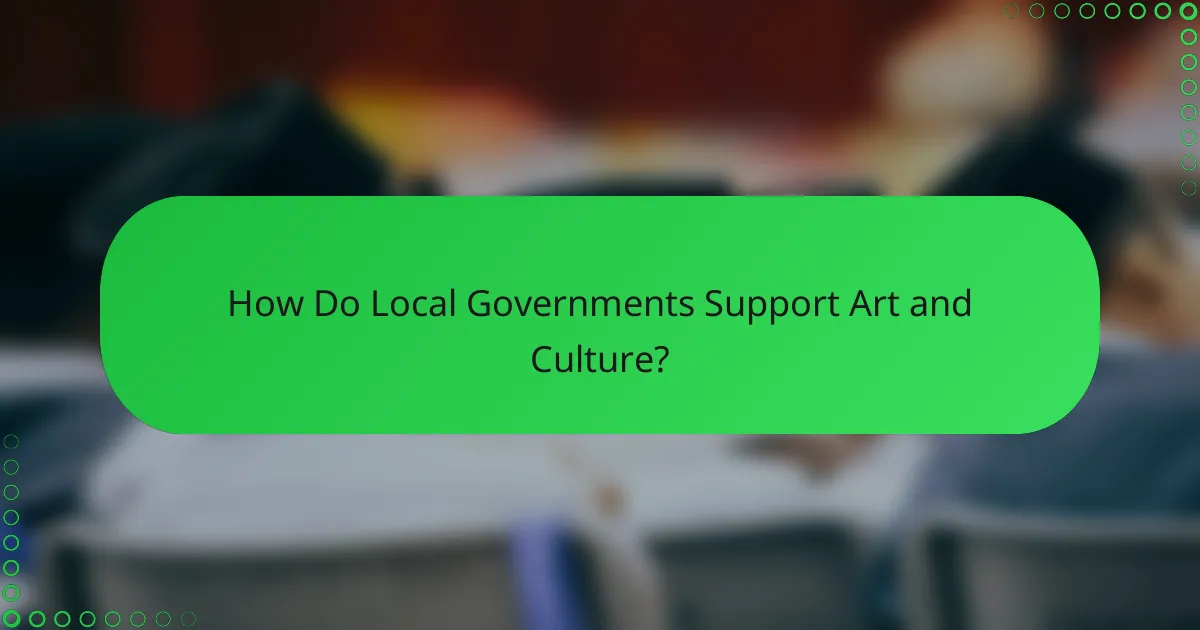
How Do Local Governments Support Art and Culture?
Local governments play a crucial role in supporting art and culture through various initiatives, including funding, partnerships, and community engagement programs. These efforts aim to enhance cultural vibrancy and accessibility for residents and visitors alike.
Funding for community projects
Local governments often allocate budgets specifically for community art projects, which can range from public murals to local theater productions. Funding amounts can vary widely, typically falling within the low thousands to tens of thousands of dollars, depending on the project’s scope and community impact.
To access these funds, community groups usually need to submit proposals outlining their project goals, budget, and expected outcomes. It’s essential to demonstrate how the project will benefit the local community and align with cultural objectives.
Partnerships with local organizations
Collaboration with local organizations is a key strategy for local governments to enhance art and culture. By partnering with museums, galleries, and cultural institutions, governments can leverage resources and expertise to create more impactful programs.
These partnerships can take various forms, such as co-hosting events, sharing facilities, or providing promotional support. Engaging with local artists and cultural groups fosters a sense of ownership and encourages community participation, which is vital for the success of cultural initiatives.
